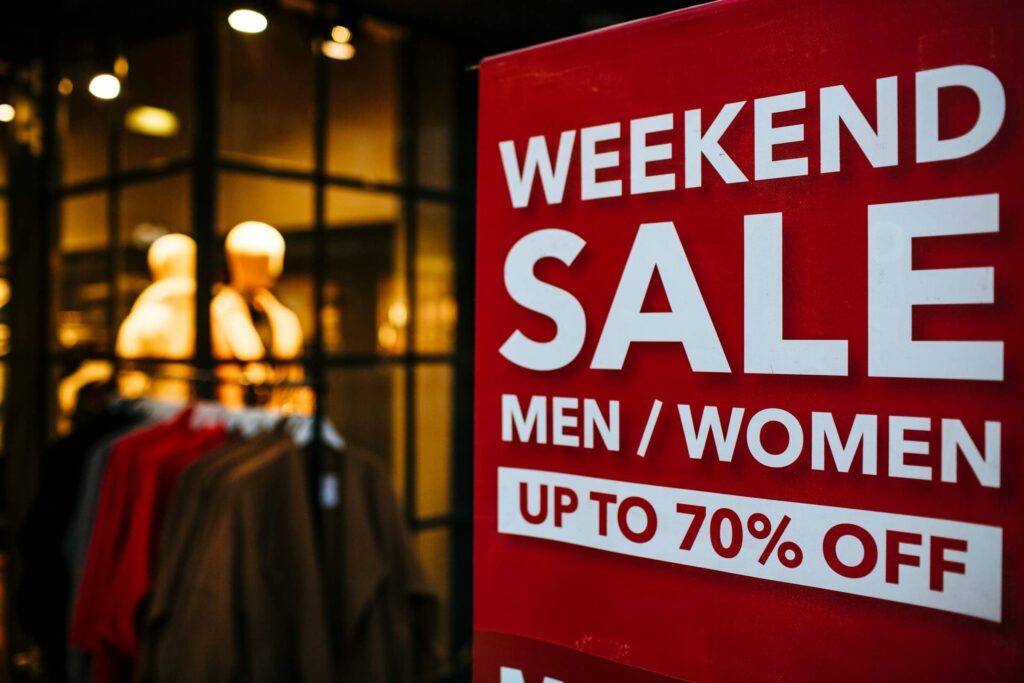
There’s a strange thing that happens when someone says, “Only three left in stock,” or when a sale ends at midnight, or when a product is labeled “limited edition.” Or when we hear the phrase, “But don’t wait—these are moving fast.”
Even if the item wasn’t on your shopping list a moment ago, all of a sudden, the item starts to feel important—urgent, even.
There’s a name for this: The Scarcity Effect.
This experience is, of course, not unique. You knew exactly the scenarios I mentioned in the first paragraph because you’ve heard them countless times before.
Even more, not only is the phrasing recognizable, most of us have felt the internal nudge that we should buy something now, simply because it might not be available later. We’ve bought things we didn’t need—not because we truly valued them—but because we feared missing out.
And it’s influencing more decisions than we realize.
What is the Scarcity Effect?
The Scarcity Effect is a psychological principle that occurs when people place a higher value on something that is limited in availability. The less available something becomes (or appears to become), the more we desire it—whether we actually need it or not.
On some level, it makes sense. Diamonds are more valuable than rocks because diamonds are not as abundant and more scarce. But these perceptions can result in irregular or even unhealthy decision-making when the scarcity is entirely manufactured.
The principle has been studied for decades. A classic experiment from 1975 by researchers Worchel, Lee, and Adewole involved two jars of cookies. One jar held ten cookies, while the other held only two. Participants were asked to rate the cookies—and overwhelmingly, the cookies from the nearly empty jar were rated as more desirable and valuable, even though they were exactly the same.
Scarcity increases perceived value, even if the value is no different.
Marketers and retailers know this well. They create scarcity intentionally—limited-time offers, countdown timers, flash sales, exclusive collections, seasonal releases. No doubt, you’ve seen them all over the Internet and in brick-and-mortar stores. All of these tactics are designed to trigger the internal fear that if we don’t act now, we’ll miss out.
Here’s an entire article offering marketers “innovative ideas” to create scarcity and urgency, encouraging people to take quick action on an item for sale.
And so often, we act—often without thinking clearly about whether we actually need the item or not. Or whether the scarcity is true or manufactured.
The Scarcity Effect pushes us to buy things out of fear, not purpose. It clouds our judgment and convinces us that a possession is more important than it really is—just because it might not be available later. And in doing so, it creates negative effects on our lives: it empties our wallets and often fills our homes with items we never truly needed in the first place.
Not only do the items we buy clutter our physical space, they also take up our time, energy, and attention—precisely the things minimalism helps us reclaim.
How to Overcome the Scarcity Effect
It’s one thing to be aware of the Scarcity Effect. It’s another to overcome it—not just once, but as a lifestyle. But we can do both.
Here are some helpful ways to resist this all-too-common temptation:
1. Pause before purchasing.
When scarcity is used to create urgency, one of the most effective responses is simply to pause. Rarely is a purchase as urgent as the marketing claims it to be. If something is truly needed, it will still be needed tomorrow. Take 24 hours before making a decision. If the desire fades, so did the illusion of need.
“But what about the deadline?” you might ask. My mom summed it up really well when I was young. “If a salesman is pressuring you that there’s a deadline on a purchase, it’s almost never a good deal.”
2. Ask: “Would I want this if it wasn’t limited?”
Strip away the scarcity messaging and ask honestly: “Would I still want this item if it were always available at this price?” Or you can try, “Would I still want this if there were thousands of them still available?” That question might help reveal whether the desire is genuine or artificially inflated.
3. Recognize fear-based marketing for what it is.
Most scarcity-based tactics are not there to help us, they are there to manipulate us. The more we recognize phrases like “only two left” or “before it’s gone forever” as psychological tricks, the easier they are to ignore. Additionally, the more we recognize them around us almost everywhere we look, the easier it becomes to decipher which are entirely manufactured to manipulate us.
4. Focus on long-term value, not short-term emotion.
The Scarcity Effect thrives on impulse. Minimalism, on the other hand, thrives on intentionality. Long-term value should always outweigh short-term emotion. One of the best questions to ask is, “How will this item improve my life one year from now?” Or, “Will this item help me accomplish my purpose in life? Or just distract me from it?” If the answer is unclear, it’s probably not worth owning.
5. Remember: scarcity doesn’t create worth—purpose does.
It’s easy to believe that something is valuable just because it’s rare. But minimalism invites us to rethink the perceived value of almost everything. Purpose is what brings value and fulfillment into our homes and lives—not scarcity, status, deadlines, or hype. And an unneeded tool left on the shelf is more valuable than a trendy gadget collecting dust.
The Scarcity Effect is a cognitive bias that often influences our behavior—both in the pursuit and accumulation of physical things. But once we recognize it, we can begin to overcome it.
And the more we overcome it, the more intentional our lives become.


